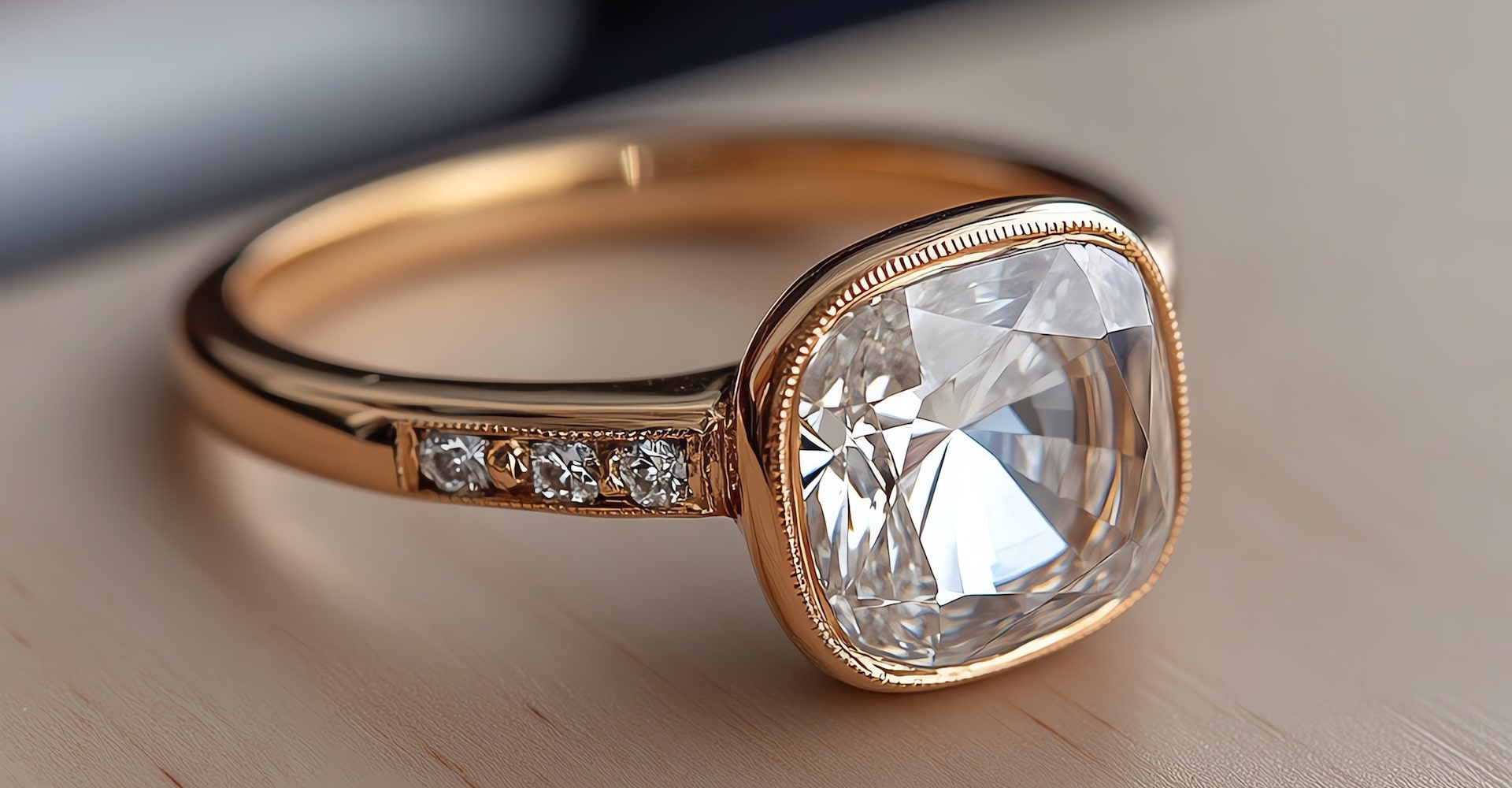What Is Milgrain on a Ring?

If you’ve ever admired a ring with tiny, delicate beaded edges that add a vintage, intricate look, you were likely admiring milgrain. Milgrain is a small but impactful detail that can completely transform the character of a piece of jewelry.
Whether you’re designing an engagement ring, wedding band, or heirloom piece, understanding milgrain can help you make more informed design choices. Let’s dive into what milgrain is, how it’s made, and how it wears over time.
What Is Milgrain?
Milgrain (sometimes spelled millegrain, meaning “a thousand grains” in French) refers to a jewelry detailing technique where tiny metal beads or ridges are added to the edges or surfaces of a ring. This embellishment creates a soft, textured border that adds elegance, dimension, and an antique feel to the design.
Milgrain is often used in:
- Engagement rings — particularly vintage or Art Deco styles.
- Wedding bands — for a subtle, ornate detail along the edges.
- Heirloom recreations — to maintain authenticity in antique-style pieces.
- Custom jewelry — where a personal, intricate touch is desired.
The technique can be achieved in several ways:
- Hand-applied milgrain: Jewelers use specialized tools to roll and sculpt the beads directly into the metal, creating an artisanal, slightly irregular look that feels truly one-of-a-kind.
- Cast milgrain: The milgrain pattern is created in a wax mold and cast along with the rest of the ring, giving a uniform and consistent appearance.
- Machine-applied milgrain: Precision machinery is sometimes used to apply the detailing, allowing for fine, extremely consistent beads.
Machine-applied milgrain is ideal for those who prefer a perfectly uniform, crisp appearance across their jewelry. It can achieve a delicate finish that looks flawless under magnification, making it a popular choice for modern designs where exact symmetry is desired. Additionally, because the process is faster and more standardized, machine-applied milgrain is often more budget-friendly than hand-applied techniques.
The choice between hand-applied, cast, or machine-applied milgrain often depends on the look you are going for, your budget, and how much individuality you want in your ring design. Hand-applied milgrain offers the most artisanal touch, perfect for those who want a one-of-a-kind feel, while cast and machine-applied options offer durability and precision that can beautifully complement both vintage and contemporary aesthetics.
Here’s a quick comparison:
| Method | Look | Cost | Durability |
| Hand-applied | Slightly varied, artistic | Higher | Very durable |
| Cast | Consistent, vintage feel | Moderate | Durable but softer |
| Machine-applied | Ultra-precise, uniform | Lower | Very durable |
Adding milgrain to a ring instantly enhances its visual complexity and gives it a timeless, refined character — perfect for those who love designs rich in heritage and detail.
Does Milgrain Wear Off?
Because milgrain detailing consists of tiny beads raised above the surface of the metal, it is susceptible to wear over time, especially on rings that are worn daily. Constant contact with surfaces, exposure to friction, and the natural oils from your skin can gradually smooth down or flatten the fine details.
Several factors can influence how quickly milgrain wears:
- Metal type: Softer metals like gold may show wear faster than harder metals like platinum.
- Location of milgrain: Milgrain on the outer edges or exposed areas of a ring will wear more quickly than protected or recessed areas.
- Lifestyle: If you work with your hands or are very active, your ring (and its milgrain) will experience more friction and wear.
However, the good news is that milgrain can be restored! Skilled jewelers can reapply or refurbish worn milgrain detailing to make your ring look as stunning as the day you first wore it. In many cases, a jeweler can use a milgrain tool to re-roll the beading, or if the ring is being resized or repaired, they can freshen up the detail at the same time.
To protect your milgrain:
- Remove your ring when doing heavy work or activities that involve a lot of hand use.
- Bring your ring in for regular professional cleanings and inspections.
- If you notice wear, don’t wait too long to have it restored to preserve the original design.
Adding milgrain is more than just a design choice — it’s a statement of sophistication, tradition, and meticulous craftsmanship. Whether you want a vintage-inspired engagement ring, a custom heirloom piece, or simply a subtle touch of texture, milgrain can elevate your jewelry design to something truly special. At Finer Custom Jewelry, we specialize in creating detailed, stunning rings with features like hand-applied milgrain. If you’re ready to create your dream piece or restore an existing one, call us or schedule an appointment today.



